Employee Relations Questions of the Week
Free Speech in the Workplace: Navigating Rights & Respect
Publishedin Communications, Employee Relations, HR Compliance Question of the Week
Conflict Management Strategies To Help Employees Work Together
Last Updatedin Employee Relations, Videos Question of the Week, Video
Workplace Bullying
Last Updatedin Communications, Employee Relations, HR Compliance Question of the Week
Investigations With Intention
Last Updatedin Employee Relations, HR Compliance Question of the Week
Civility in the Workplace
Last Updatedin Employee Relations, Videos Question of the Week, Video
What Questions Should I Ask During An Exit Interview?
Last Updatedin Employee Relations Question of the Week
Specific Ways HR Can Cultivate an Inclusive Workplace
Last Updatedin Employee Relations Question of the Week
How to Handle Unemployment Fraud?
Last Updatedin Employee Relations Question of the Week
Empathy First: A Modern Guide to Nonprofit Layoffs
Last Updatedin Communications, Employee Relations Question of the Week
How Do I Successfully Coach Employees to Improve Performance?
Last Updatedin Employee Relations, Training & Development Question of the Week
Video: What is a DiSC Assessment and What is it Used For?
Last Updatedin Employee Relations, Training & Development, Videos Question of the Week, Video
How Can I Support Employee Well-Being Beyond the EAP?
Last Updatedin Employee Relations, Health, Safety & Security Question of the Week
Three Ways Employers Can Promote Work-Life Balance
Last Updatedin Employee Relations Question of the Week
What Are Employee Pulse Surveys And How Can They Increase Retention?
Last Updatedin Employee Relations Question of the Week
How To Conduct A Workplace Harassment Investigation
Last Updatedin Employee Relations, HR Compliance Question of the Week
How to Re-Energize Your Team Through Training & Development
Last Updatedin Employee Relations, Training & Development Question of the Week
How to Address Employee Hygiene Issues in the Workplace
Last Updatedin Employee Relations Question of the Week
Preventing A Hostile Environment
Last Updatedin Employee Relations Question of the Week
Mandatory Retirement: Is It Legal?
Last Updatedin Employee Relations, HR Compliance Question of the Week
Can My Employee Take a Vacation While on FMLA Leave?
Last Updatedin Benefits & Compensation, Employee Relations Question of the Week
Top 3 Reasons Why New Hires Leave… And How to Turn Around Your Turnover!
Last Updatedin Employee Relations, Recruitment Question of the Week
Is it Important to Use Consensual Relationship Agreements?
Last Updatedin Employee Relations, HR Compliance Question of the Week
Employee Engagement Ideas To Fit Any Budget
Last Updatedin Employee Relations Question of the Week
5 Key Points To Use Assessments in the Employee Life Cycle
Last Updatedin Employee Relations, HR Strategy Question of the Week
Can I Fire Someone During Their Introductory Period?
Last Updatedin Employee Relations Question of the Week
How Can We Make DE&I Programs More Effective?
Last Updatedin Employee Relations Question of the Week
Could Sabbaticals Be Your Next Retention Tool?
Last Updatedin Benefits & Compensation, Employee Relations Question of the Week
What are the Essentials of a Good Employee Relations Plan?
Last Updatedin Employee Relations Question of the Week
How Employers Can Understand and Support Those With Eating Disorders
Last Updatedin Employee Relations Question of the Week
Work-Life Balance Has Become Work-Life Integration
Last Updatedin Employee Relations Question of the Week
7 Tips On How To Deal With Difficult People At Work
Last Updatedin Employee Relations Question of the Week
Benefits of Using Employee Engagement Surveys
Last Updatedin Employee Relations Question of the Week
Should We Abolish Performance Improvement Plans?
Last Updatedin Employee Relations Question of the Week
Why Employee Retention is More Important Now Than Ever
Last Updatedin Employee Relations Question of the Week
Working Together Effectively After A Harassment Investigation
Last Updatedin Employee Relations Question of the Week
Why Is Workplace Monitoring Necessary?
Last Updatedin Employee Relations Question of the Week
Delegation – But I Don’t Want to Give Up Control!
Last Updatedin Employee Relations Question of the Week
Making the Change Towards Corporate Social Responsibility in Your Organization
Last Updatedin Employee Relations Question of the Week
Being Charged for Constructive Discharge
Last Updatedin Employee Relations Question of the Week
How to Handle Political Talk During the Work Day
Last Updatedin Employee Relations Question of the Week
What Should I Consider Before Doing a Reduction in Force?
Last Updatedin Communications, Employee Relations, HR Compliance Question of the Week
The Advantages and Disadvantages of a “360” Feedback Process
Last Updatedin Employee Relations Question of the Week
Impact Of Miscarriage On Leave
Last Updatedin Employee Relations, HR Compliance Question of the Week
Where Do They Fit In? Why Don’t My Employees Understand?
Last Updatedin Employee Relations Question of the Week
Making A Drug Free Workplace Exception
Last Updatedin Employee Relations Question of the Week
Performance Management: The Individual Strategic Plan
Last Updatedin Employee Relations Question of the Week
Should I be worrying about employee retention?
Last Updatedin Communications, Employee Relations, HR Strategy Question of the Week
Requiring Employee Contact Information
Last Updatedin Employee Relations, Recordkeeping Question of the Week
Contact Us
Clark Schaefer Strategic HR
10856 Reed Hartman Hwy
Suite 225
Cincinnati, OH 45242

Clark Schaefer Strategic HR is recognized by SHRM to offer Professional Development Credits (PDCs) for SHRM-CP® or SHRM-SCP® recertification activities.
The information provided on this website does not, and is not intended to, constitute legal advice; instead, all information, content, and materials available on this site are for general informational purposes only. Readers of this website should contact their attorney to obtain advice about their particular situation and relevant jurisdiction. This website contains links to other third-party websites. These links are only for the convenience of the reader, user or browser; Strategic HR does not recommend or endorse the contents of the third-party sites.







